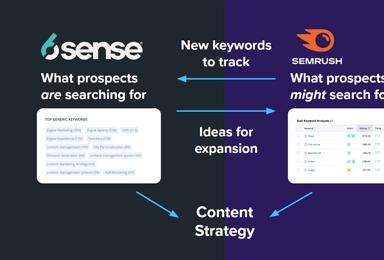Connecting Drupal 8 with Salesforce
As Drupal 8 has matured as an enterprise content management system, so has its ability to connect with enterprise SaaS CRMs such as Salesforce. As the undisputed IBM of CRM solutions (for now, anyway) Salesforce is a cornerstone for most businesses. And now with tighter integrations than ever before, Drupal 8 can be too.
With that, let's explore some key considerations involved in connecting Drupal 8 with Salesforce.
All Hail the Cloud
At its most basic core, Salesforce is really a database of contacts in the same way that Drupal is a database of content. Yes, Drupal also has users and Salesforce often houses products, events, etc., but you get the idea. What’s important is that customers interact with both systems. Whether it’s reading website content or opening an email from a salesperson, customer data across all fronts is critical to consolidate, manage and leverage.
Integration is a Dirty Word
You may be wondering what’s involved with a Drupal integration with Salesforce. Ah, the dreaded “I” word...integration. So often the herald of scope creep and blown budgets. Integrating Salesforce with Drupal 8 can vary between something as simple as submitting contact forms to the CRM, to running a global ABM effort supported by a sophisticated Drupal website equipped with real-time personalization. In either case, leveraging Drupal 8’s API-first architecture and its plethora of open source modules are key. In this case, the Drupal Salesforce module is our starting point.
Modules Make the World Go Round
The Drupal Salesforce Suite module is a testament to both the ingenuity and passion of the Drupal community and the flexibility of Drupal as an enterprise platform. As a contributed module, the Salesforce Suite for Drupal enables out of the box connection with Salesforce, no matter your configuration.
Available free on drupal.org, the module offers:
-
Single Sign-On (SSO) with OAUTH2 authentication, which lets you pass credentials to Salesforce (and log in seamlessly. Salesforce events are also accessible through Drupal 8. Handy!
-
Entity mapping, which means tying fields in your Drupal site to those in Salesforce, such as “Markets” you serve for upcoming events or hidden user fields like “Lead Score.”
-
Ability to push data to Salesforce from Drupal, such as users engaging with gated content, new leads, or activity data to ensure Salesforce has all the information it needs to make decisions. This is critically important with AI advancements such as Salesforce Einstein.
-
Ability to pull data such as new products, syncing events, etc into Drupal. Often, this takes the form of rough data imports for critical fields (like product information) that site admins can add to using Drupal 8’s editing capabilities.
Take it to the Skies
While the Salesforce Suite module is a great start, any complex integration requires an experienced and competent Drupal development team to implement. Establishing an API connection is one thing, but building a Drupal 8 site to adapt to changing conditions on the Salesforce side is critical, as well as sound architecture on the Drupal 8 side to ensure data integrity and easy management for non-technical site admins.
Looking to connect Drupal 8 with Salesforce? Contact us about your project and see how we can help.

